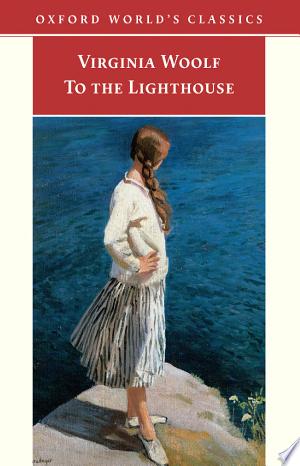Estimated read time: 5 min read
One Sentence Summary
A family's annual trip to their summer home is marked by personal reflection, loss, and the passing of time.
Introduction
"To the Lighthouse" is a classic novel by Virginia Woolf, first published in 1927. Woolf is known for her innovative narrative techniques and exploration of the inner thoughts and emotions of her characters. In "To the Lighthouse," she delves into the complexities of human relationships, the passage of time, and the nature of art. The novel is set in the early 20th century and is divided into three parts, each capturing different moments in the lives of the characters.
Brief Synopsis
Plot Overview and Setting
"To the Lighthouse" is set in the Hebrides, a group of islands off the coast of Scotland. The novel is divided into three sections: "The Window," "Time Passes," and "The Lighthouse." The story revolves around the Ramsay family and their guests as they spend the summer in their house by the sea. The narrative explores the dynamics of the family, the impact of World War I, and the creative process of the artist Lily Briscoe.
Main Characters
The novel features a diverse cast of characters, each with their own complexities and struggles. Here are the main characters:
| Character | Description |
|---|---|
| Mr. Ramsay | A philosophical and somewhat tyrannical father figure |
| Mrs. Ramsay | A nurturing and empathetic matriarch, striving to keep harmony |
| James Ramsay | The youngest son, struggling to gain his father's approval |
| Lily Briscoe | A painter and friend of the Ramsays, grappling with her artistic vision |
| Charles Tansley | A guest at the Ramsay's house, intellectually arrogant but also vulnerable |
Summary of Each Part
Part 1: "The Window"
In "The Window," the Ramsay family and their guests are introduced. The interactions among the characters reveal their complex relationships and conflicting emotions. Mrs. Ramsay is depicted as the nurturing center of the household, while Mr. Ramsay's philosophical preoccupations sometimes lead to tension. The youngest son, James, yearns for his father's attention, adding to the familial dynamics.
Part 2: "Time Passes"
"Time Passes" is a more experimental section of the novel, depicting the passage of time and the impact of World War I on the house and its surroundings. The absence of the characters and the decay of the house reflect the broader themes of impermanence and change.
Part 3: "The Lighthouse"
In "The Lighthouse," the characters return to the house after the war. The focus shifts to Lily Briscoe, who grapples with her artistic vision and the influence of the Ramsay family on her work. The characters confront their internal struggles and attempt to reconcile with the changes that have occurred during their absence.
Main Events
The novel is rich in emotional and psychological events that shape the characters' experiences. Some of the main events include:
- Mrs. Ramsay's efforts to bring harmony among the guests
- Mr. Ramsay's intellectual pursuits and his interactions with the family
- The impact of World War I on the characters and the house
- Lily Briscoe's artistic journey and her relationships with the Ramsays
- The characters' reflections on the passage of time and the nature of change
Themes and Insights
Themes
"To the Lighthouse" explores several profound themes:
- Time and Change: The novel delves into the passage of time and the inevitability of change, both in the external world and within the characters themselves.
- Family and Relationships: The dynamics of the Ramsay family and their guests reflect the complexities of familial and interpersonal relationships, including love, conflict, and understanding.
- Art and Creativity: The character of Lily Briscoe embodies the theme of artistic vision and the challenges faced by artists in expressing their innermost thoughts through their work.
Insights
Woolf's narrative provides deep insights into the human experience, including the fleeting nature of moments, the intricacies of emotional connections, and the struggle to find meaning amidst life's complexities. The novel's experimental structure allows readers to engage with the characters' inner thoughts and the broader themes of existence.
Reader's Takeaway
"To the Lighthouse" offers readers a thought-provoking exploration of human relationships, the passage of time, and the nature of art. Through Woolf's lyrical prose and innovative narrative techniques, readers are invited to contemplate the intricacies of the human experience and the profound impact of external forces on individual lives.
Conclusion
In "To the Lighthouse," Virginia Woolf crafts a timeless and introspective narrative that continues to resonate with readers. Through its compelling characters, evocative setting, and profound themes, the novel invites readers to contemplate the complexities of human existence and the enduring pursuit of meaning amidst life's transient nature. Woolf's exploration of the characters' inner lives and the passage of time creates a narrative tapestry that remains a profound and enduring literary achievement.
To the Lighthouse FAQ
What is the genre of 'To the Lighthouse'?
The genre of 'To the Lighthouse' is primarily modernist fiction, with elements of psychological fiction and stream-of-consciousness narrative.
Who is the author of 'To the Lighthouse'?
Virginia Woolf is the author of 'To the Lighthouse'.
When was 'To the Lighthouse' first published?
'To the Lighthouse' was first published in 1927.
What is the setting of 'To the Lighthouse'?
The novel is set in the Hebrides, a group of islands off the west coast of Scotland, and primarily takes place at the Ramsay family's summer home.
What is the central theme of 'To the Lighthouse'?
The central themes of 'To the Lighthouse' include the passage of time, the nature of art and creativity, the complexities of human relationships, and the search for meaning and understanding in life.





